柳原 睦夫/Yanagihara Mutsuo
柳原睦夫(1934~)は、現代陶芸の第一人者として知られる陶芸家です。
高知県出身の柳原は、元々陶芸とは無縁の家庭に生まれ育ち、高校卒業後はデザインを学ぼうと京都市立美術大学(現・京都市立芸術大学)への進学を目指していました。ところが、縁故のあった学長と面会した際、同大学の陶磁器専攻で主任教授を務めていた富本憲吉(1886~1963)に師事するよう勧められ、図らずも陶芸の道へと進路を変更することになります。同大学には、のちに人間国宝に認定される近藤悠三(1902~1985)や藤本能道(1919~1992)が教員として、彫刻科には「走泥社」を創設した八木一夫(1918~1979)らが学生として在籍していました。錚々たる顔ぶれがそろったこの環境で、柳原は大いに刺激を受けながら、作陶の技術や芸術家としての姿勢を育み、徐々に独自の作風を築きあげていったのです。
本格的な作家活動が始まった1950年代後半から1960年代半ばにかけて、モダンアート協会に発表していた柳原の作品からは、旧態依然とした陶芸界への反発や前衛陶芸からの影響が読み取れますが、この頃彼が何よりも関心を寄せていたのはアメリカの現代美術、ひいてはアメリカ文化そのものでした。1966年にワシントン大学の講師として招聘され、念願だった渡米を果たした際には、ポップアート全盛期のアメリカに揉まれ、憧れと反発を繰り返しながら自分自身を、そして日本の焼き物なるものを見つめ直すこととなりました。その内省を通して、視覚的な明確さを求める欧米と、見ることをそこまで重要視していない日本の違いに気づいた柳原は、日本の焼き物のなかでも明瞭なかたちで視覚を刺激するものを探し求めた末、やがて須恵器のフォルムに注目するようになります。かねてより興味を抱いていたコラージュにも通ずる、器の各部分を別々に制作してつなぎ合わせる須恵器にヒントを得て出来あがったのが、【紺釉金銀彩花瓶】(1971年)です。基本的な形態は須恵器に由来しつつも、刺激的な色彩やエロティックな曲線は、既存の概念や伝統を超える斬新さで人々を驚嘆させました。しかしながら、伝統的な「うつわ」でもなく、純粋芸術としての前衛陶芸の「造形」とも一線を画した作品は、日展で落選するなどその真価がなかなか認められませんでした。一方、2度目の渡米を機に生み出した、「うつわ」の要素を排除した「空」シリーズは、柳原自身の所感とは裏腹に高い評価を受けることとなります。そうした紆余曲折を経て、3度目の渡米では改めて「うつわ」のかたちに立ち返ることで自分なりの陶芸観や現代性を確立させ、「筒花瓶」や「沓花瓶」、「笑口瓶」などのシリーズを次々と制作し、作家としての成熟期を迎えたのです。
柳原が自身の原点とする「うつわ」は、日常の器物や高価な食器のみならず、内部にうつろな空間を秘めたものやイメージを指しています。モダンな「造形」と、「うつわ」としての本質が溶けあう柳原の作品は、伝統と革新を兼ね備えた新しい陶芸のありようを提示しています。
Mutsuo Yanagihara (1934-) is a renowned ceramic artist known as a pioneer in contemporary ceramics.
Originally from Kochi Prefecture, Yanagihara was born into a family with no connection to ceramics. After graduating from high school, he aimed to study design at Kyoto City University of Arts. However, during the meeting with the president who had a personal connection, he was advised to study under Kenkichi Tomimoto (1886-1963), who was serving as the head of the ceramics department at the university. This unexpected encounter led him to change his career path to ceramics. At the university, figures such as Yuzo Kondo (1902-1985) and Yoshimichi Fujimoto (1919-1992), who were later designated as Living National Treasures, served as instructors, and Kazuo Yagi (1918-1979), who founded the “Sodeisha” group (an avant-garde ceramic artist group in the post-war era), was enrolled as a student in the sculpture department. In this prestigious environment, Yanagihara was greatly stimulated, nurturing his skills in ceramics and developing his own artistic style.
From the late 1950s to the mid-1960s, during his early years as an artist, Yanagihara’s works exhibited at the Modern Art Association reflected a rebellion against the traditional ceramics world and were influenced by avant-garde ceramics. However, during this period, his primary interest was in American contemporary art and, consequently, American culture itself. In 1966, when he was invited as a lecturer at Washington University, he finally fulfilled his long-held desire to visit the United States. Immersed in the heyday of pop art in America, he alternated between admiration and resistance, reflecting on himself and reevaluating both American culture and Japanese pottery. Through this introspection, Yanagihara realized the difference between the emphasis on visual clarity in the West and the lesser importance placed on observation in Japan. He began to pursue pottery in Japan that would stimulate the visual senses clearly, eventually focusing on the form of Sue stoneware. Inspired by the collage technique, which he had long been interested in, he created the “Konyuukinginsaikabin” (1971) by making each part of the vessel separately and then combining them. The fundamental form is derived from Sue stoneware, but the provocative colors and erotic curves astonished people with an innovative freshness that transcended existing concepts and traditions. However, his works, which were neither traditional “utensils” nor pure avant-garde ceramic “sculptures” struggled to be recognized for their true value, such as being rejected from the Japan Fine Arts Exhibition (Nitten). On the other hand, the “Sora” (Sky) series, created during his second visit to the United States by eliminating elements of “utensils” received high praise despite Yanagihara’s personal feelings. Through such twists and turns, on his third visit to the United States, Yanagihara returned to the form of “utensils”, establishing his own views on ceramics and modernity. He continued to create series such as the “Tube Vase”, “Shoe Vase”, and “Smiling Bottle”, entering a period of maturity as an artist.
Yanagihara’s fundamental concept of “utensils” encompasses not only everyday utensils and expensive tableware but also objects and images containing hollow spaces within. His works, which blend modern sculptural forms with the essence of “utensils” present a new aspect of ceramics that combines tradition and innovation.
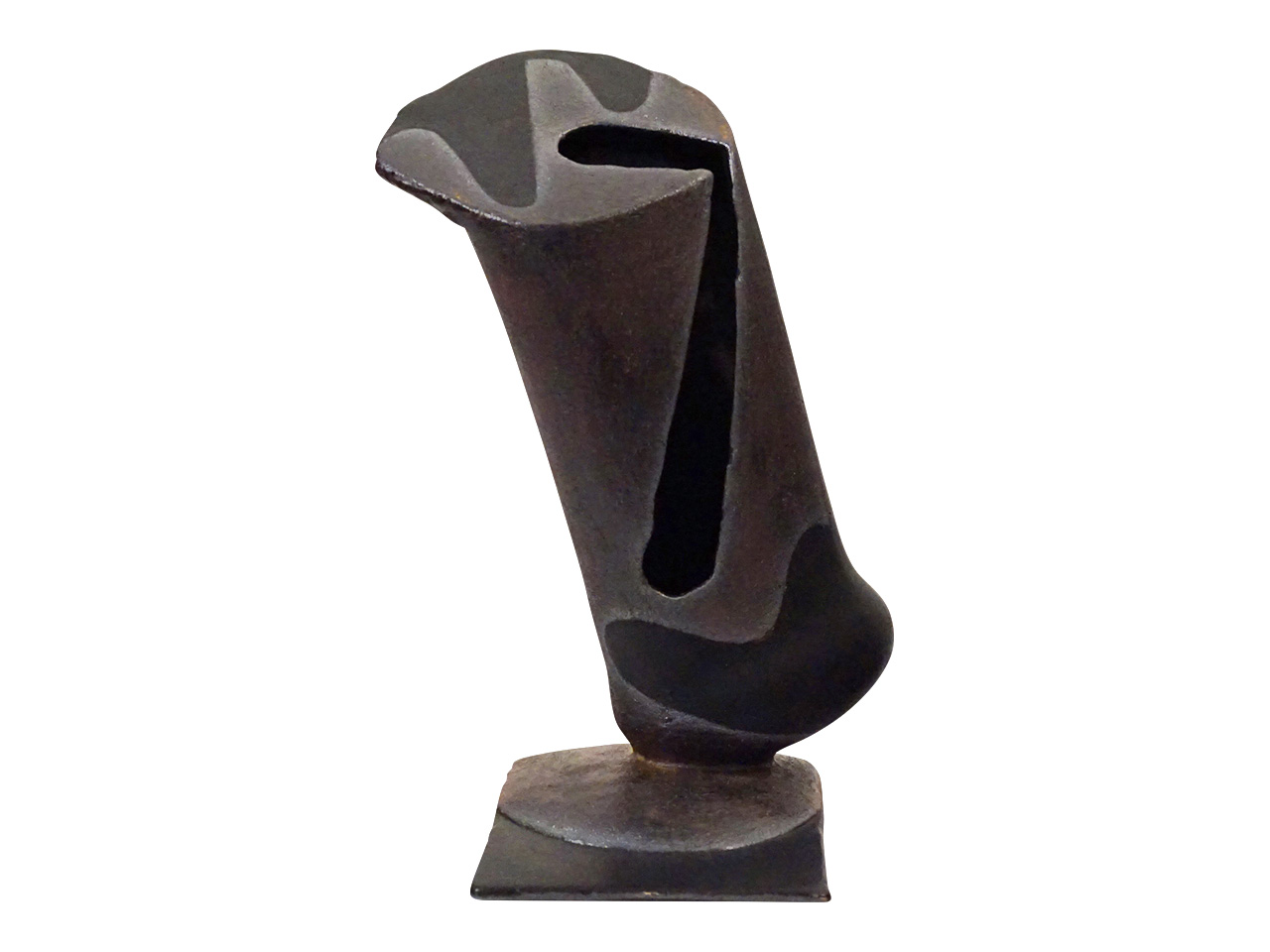
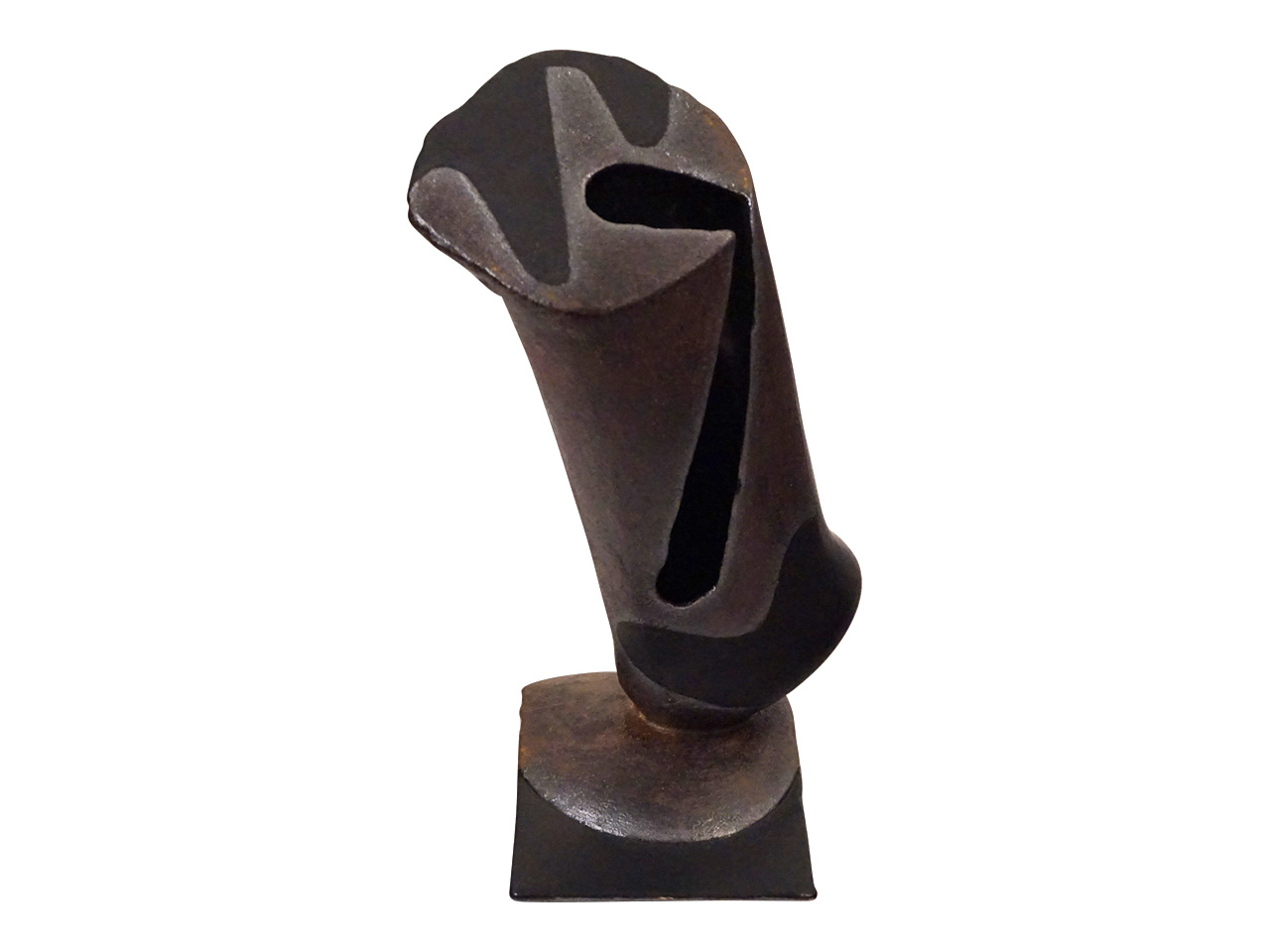
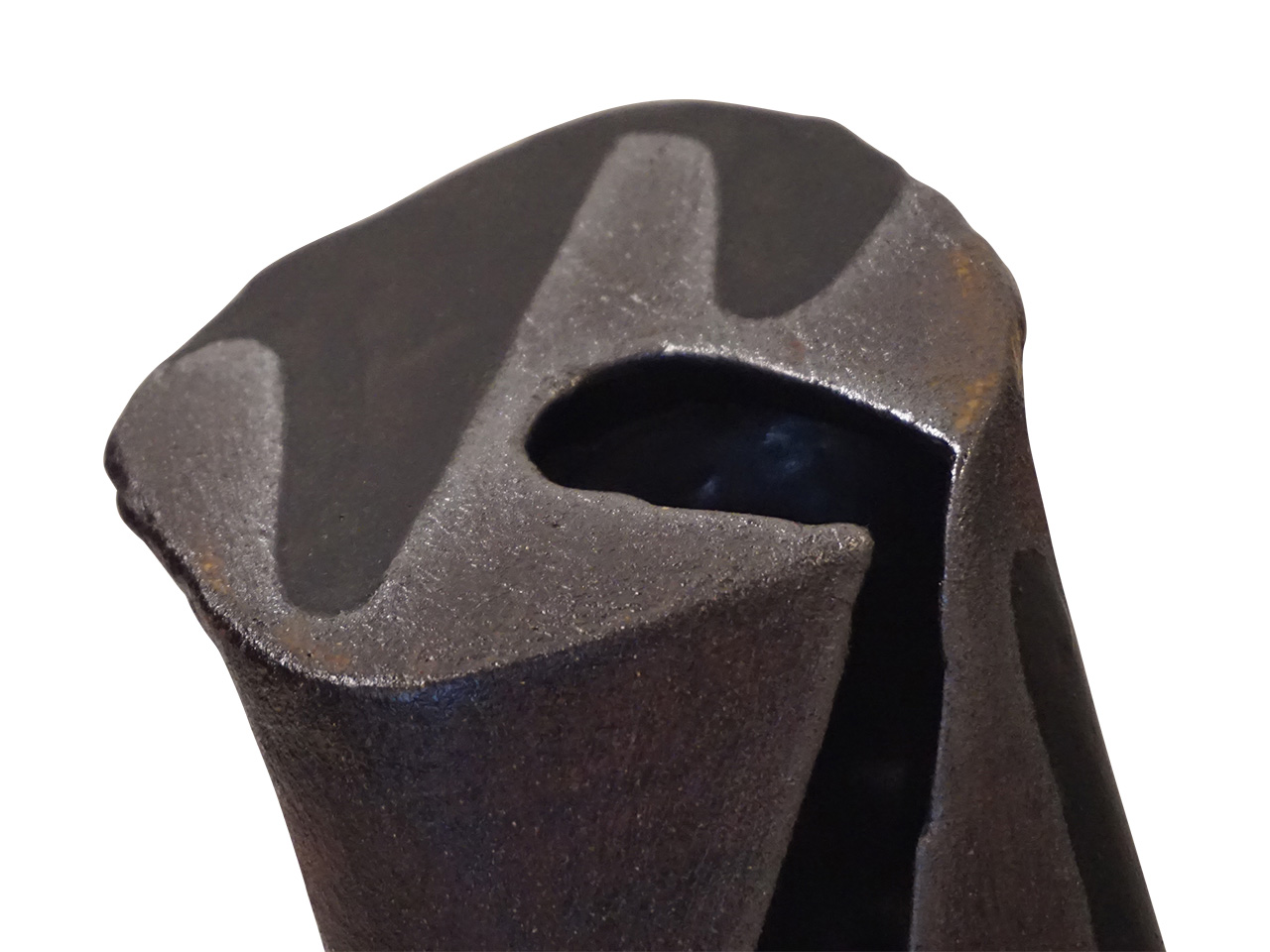
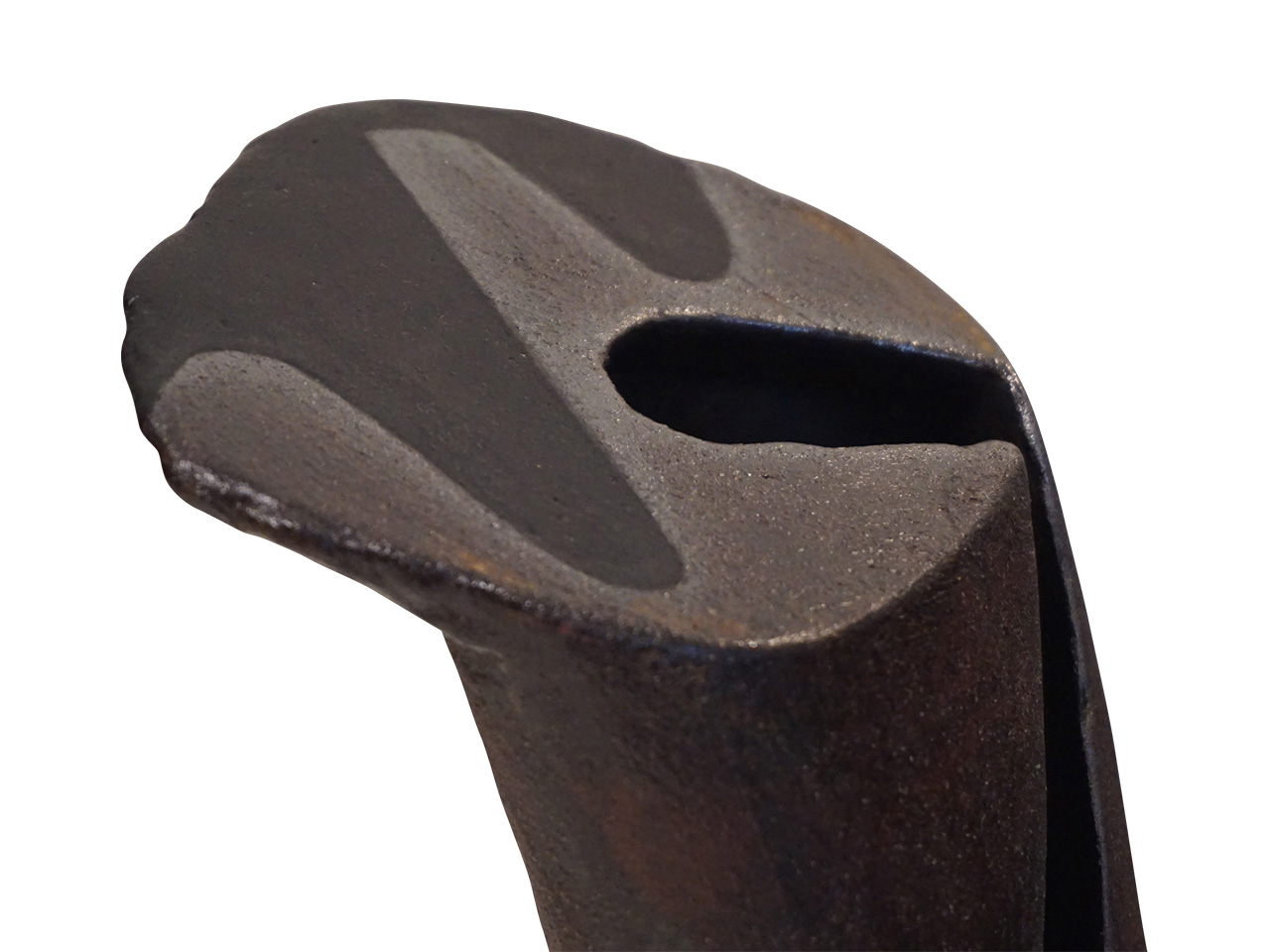
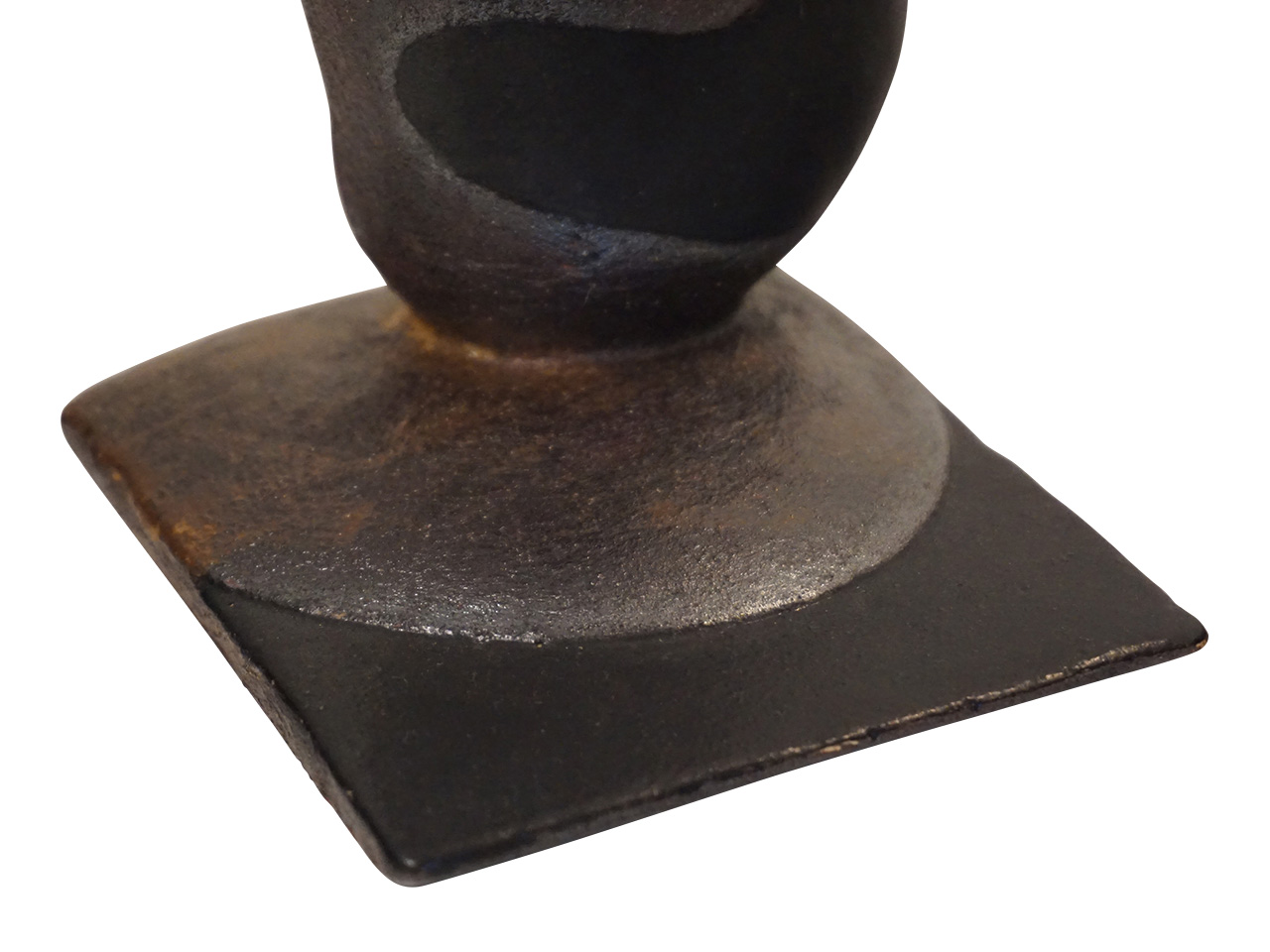
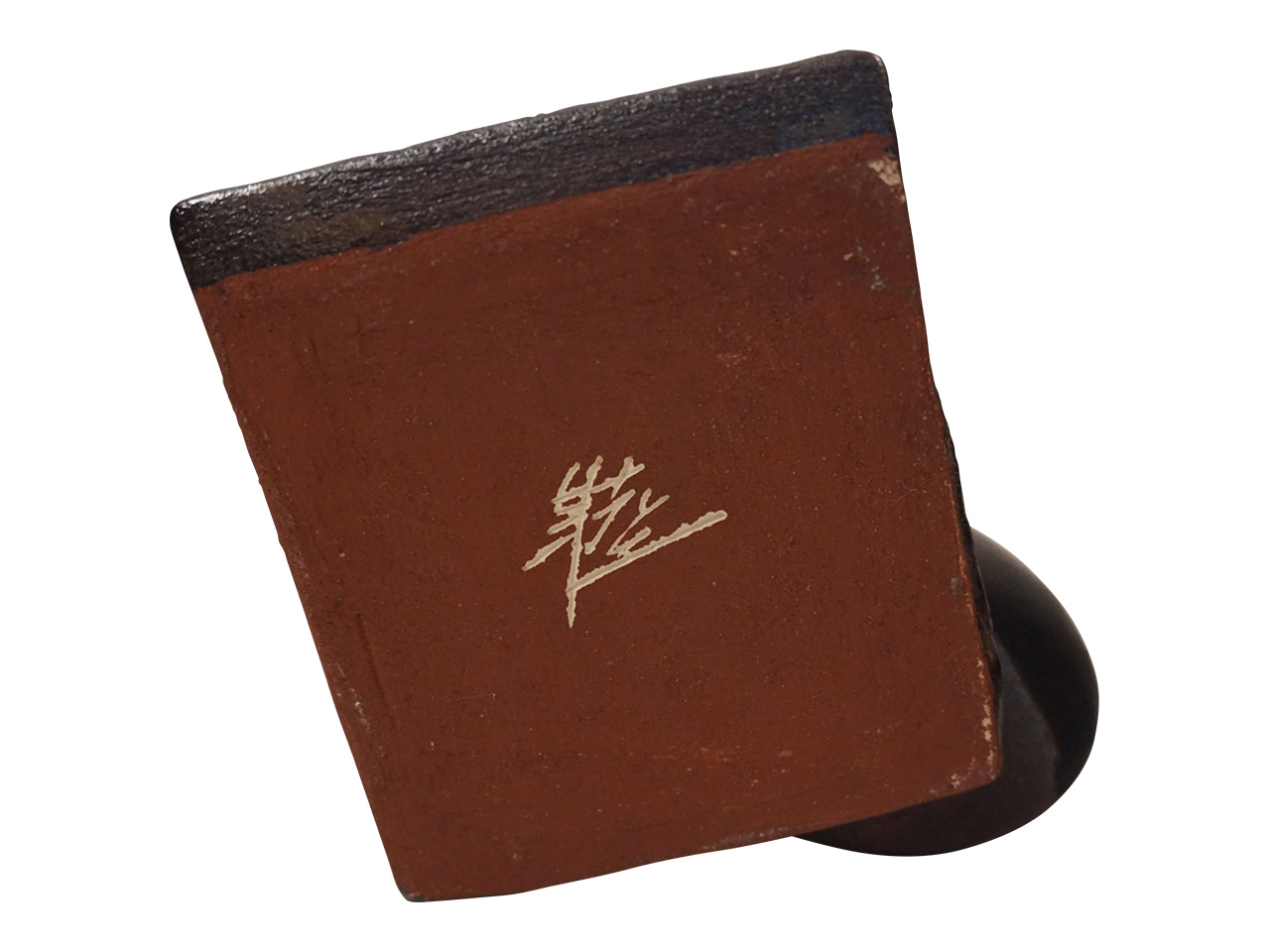
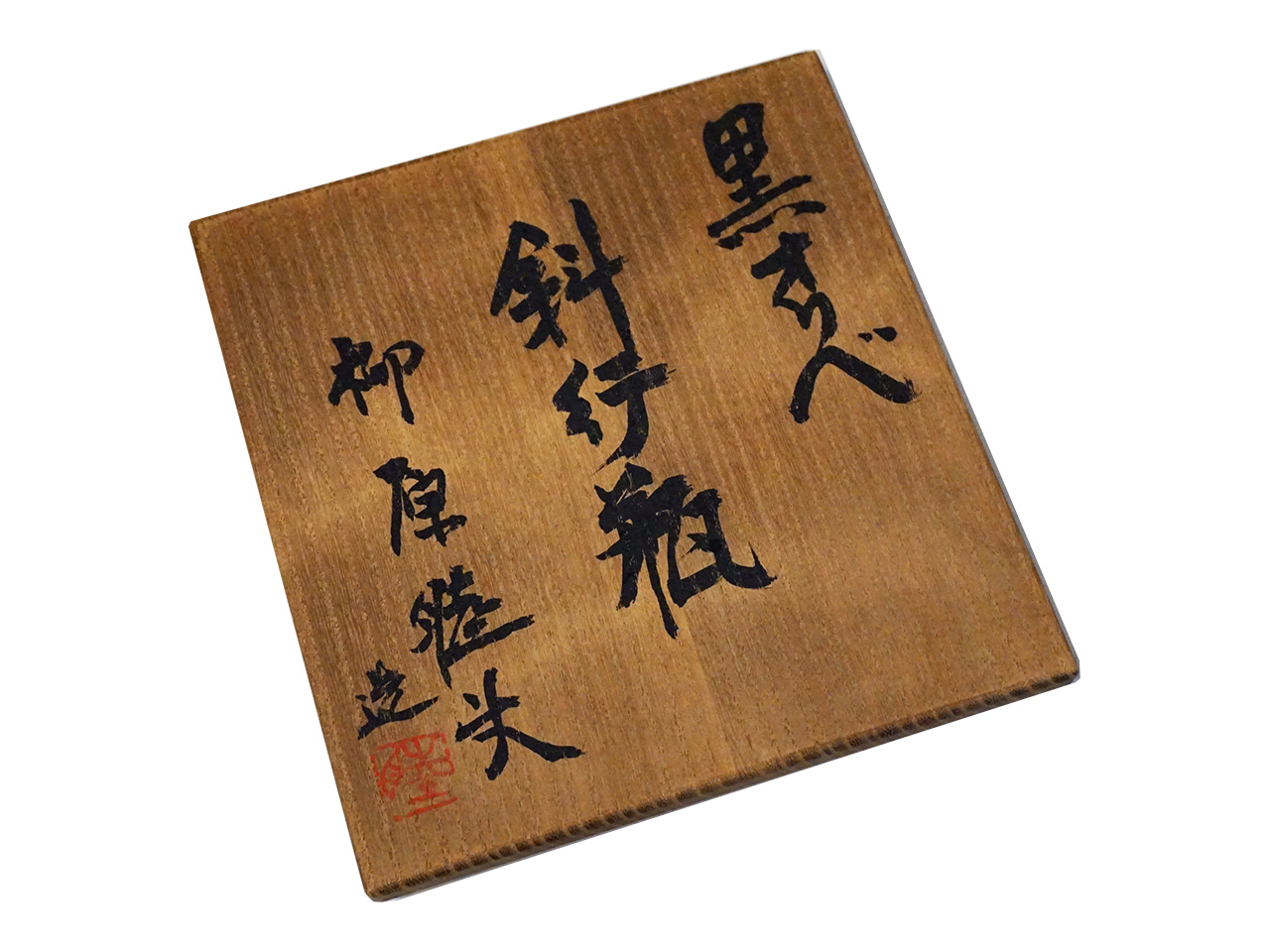
作品名:黒オリベ斜行瓶
サイズ:H22.8cm×W15cm
価格:SOLD OUT
価格は税抜き表示です

